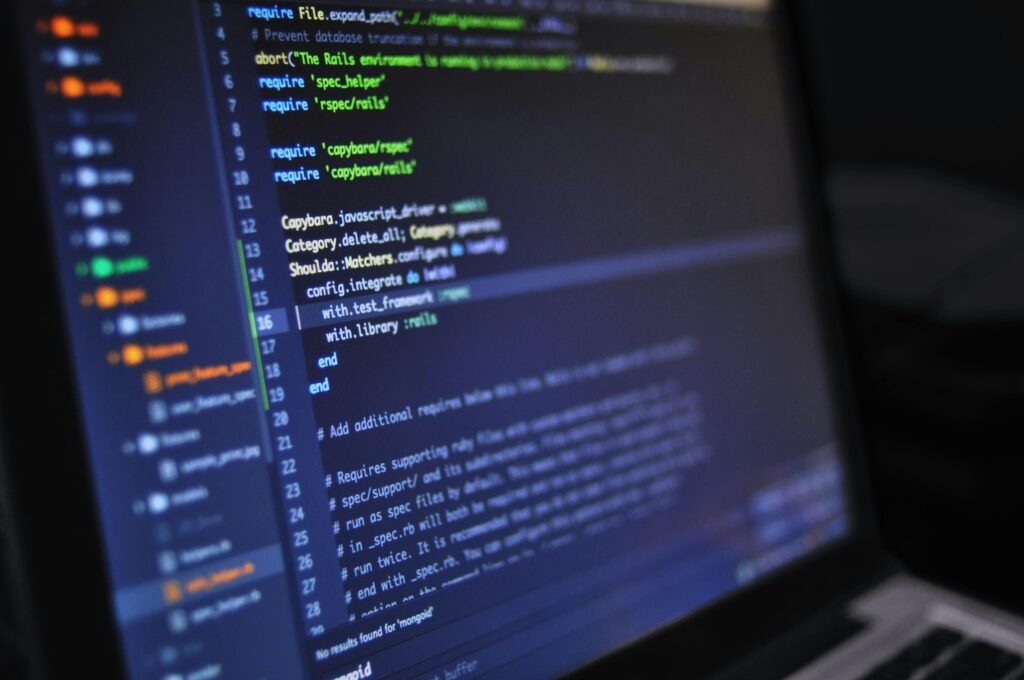
Introduction to AI Workflow Automation
In a landscape where the pace of business is increasingly accelerating, maintaining peak efficiency and focus is more critical than ever.
AI workflow automation is redefining how we approach productivity by offering innovative solutions that streamline tasks and minimize distractions.
These advancements in AI technology are tailored to help professionals manage their workloads with precision and ease.
By integrating AI-powered productivity tools, businesses can automate routine tasks, allowing employees to focus on more strategic and creative endeavors.
This not only saves time but also enhances the quality of work, as individuals are less bogged down by mundane activities.
AI tools can intelligently prioritize tasks, allocate resources efficiently, and ensure that deadlines are met without the usual stress.
Moreover, AI’s capability to provide real-time data analysis and actionable insights is a game-changer for decision-making.
With access to comprehensive analytics, professionals can make informed decisions quickly, thus staying ahead in a competitive market.
AI tools like smart calendars, automated schedulers, and intelligent notification systems further support professionals in maintaining a well-organized and productive work environment.
As AI technology continues to evolve, its integration into workflow management systems is becoming increasingly seamless.
This evolution is opening new avenues for optimizing productivity across various industries.
Whether it’s through advanced task management software or automated data processing tools, AI is setting the stage for a future where efficiency and focus are effortlessly achievable.
In summary, AI workflow automation is not just a trend but a game changing shift in how work gets done.
Its potential to revolutionize productivity makes it an indispensable asset for modern businesses aiming to thrive in an ever changing world.
Enhancing Focus with AI Tools

In today’s fast paced work environment, staying focused amidst a myriad of distractions can be challenging.
AI tools are stepping in to tackle this issue head on by helping individuals maintain concentration and optimize their workflow.
For example, AI-powered applications like Focus@Will use machine learning to create personalized soundtracks that enhance concentration.
These soundscapes are designed to minimize distractions and keep users in a state of deep focus for longer periods.
Additionally, AI-driven platforms such as Freedom and Serene can block distracting websites and apps, allowing individuals to work without interruptions.
By analyzing user habits and identifying common sources of distraction, these tools create a tailored environment conducive to productivity.
With the ability to schedule focused work sessions and breaks, users can maintain a balanced workflow that promotes sustained attention and reduces burnout.
Another key aspect of AI’s role in enhancing focus is its ability to prioritize tasks intelligently.
Tools like Todoist and ClickUp incorporate AI algorithms to analyze workloads and suggest the most efficient order for task completion.
This helps users tackle their to-do lists more effectively, ensuring that high-priority tasks are addressed first and deadlines are consistently met.
Moreover, AI chatbots such as Clara and x.ai can handle meeting scheduling and other administrative tasks, freeing up valuable time for more focused work.
These virtual assistants can manage calendars, send reminders, and even reschedule meetings as needed, all while seamlessly integrating with existing tools like Google Calendar and Microsoft Outlook.
Beyond blocking distractions and prioritizing tasks, AI tools can also provide real-time feedback to help users stay on track.
Platforms like RescueTime offer detailed analytics on how time is spent, highlighting areas where productivity can be improved.
By identifying patterns and suggesting adjustments, these tools empower individuals to make informed decisions about their work habits and optimize their focus accordingly.
The integration of AI technology into everyday workflows is transforming how we approach focus and productivity.
By leveraging these innovative tools, individuals can create a more conducive work environment that minimizes distractions, intelligently prioritizes tasks, and provides actionable insights for continuous improvement.
AI Tools for Task Management

AI tools for task management are transforming how teams collaborate and manage projects.
Software like Asana and Trello integrates AI-driven features that improve task prioritization and resource allocation.
These platforms often include features that promote team collaboration and efficiency, such as real-time updates, automated reminders, and progress tracking.
This integration of AI technology into task management helps teams stay aligned and work more effectively together.
AI tools for task management are redefining team collaboration and project management.
Platforms like Asana and Trello are now enhanced with AI-driven features designed to streamline the workflow, optimize resource allocation, and prioritize tasks intelligently.
By incorporating real-time updates, automated reminders, and progress tracking, these platforms ensure that teams stay coordinated and projects move forward smoothly.
AI algorithms can assess the workload and distribute tasks more effectively, ensuring that no team member is overburdened or underutilized.
For instance, Asana uses machine learning to predict task completion times and suggest deadlines, helping teams manage their time more efficiently.
Trello’s AI-powered Butler feature can automate routine actions like moving cards and assigning tasks based on set rules, freeing up valuable time for more critical activities.
Team collaboration is further enhanced by AI’s ability to provide insightful analytics and performance metrics.
These insights help managers identify bottlenecks, track progress, and make data-driven decisions to keep projects on track.
With features like visual dashboards and customizable reports, AI tools offer a comprehensive overview of project status and team performance.
Additionally, AI-powered chatbots and virtual assistants are becoming integral to task management platforms.
Tools like Monday.com now offer AI assistants that can handle a range of administrative tasks, from scheduling meetings to sending reminders and even generating reports.
These assistants integrate seamlessly with other tools, ensuring that all relevant information is easily accessible and up-to-date.
The integration of AI in task management also supports better communication within teams.
Platforms like ClickUp offer smart notifications and updates, ensuring that team members are always informed about changes or updates in real-time.
This level of connectivity helps prevent miscommunication and ensures that everyone is on the same page.
AI tools also offer advanced capabilities in risk management by predicting potential issues before they arise.
By analyzing past project data, these tools can identify patterns and alert managers to possible risks, allowing them to take proactive measures.
This predictive capability is crucial for maintaining project timelines and delivering quality outcomes.
In essence, AI-driven task management tools are revolutionizing how teams operate, offering a level of efficiency and insight that traditional methods simply can’t match.
By leveraging these tools, organizations can enhance productivity, improve collaboration, and achieve better project outcomes.
Automating Repetitive Tasks

Routine tasks often consume valuable time and can detract from more important, strategic activities.
This is where AI solutions come in, offering a way to automate these processes and free up time for more creative and impactful work.
Tools like Zapier and UiPath empower users to set up automated workflows that handle repetitive duties such as data entry, email sorting, and even social media scheduling.
By doing so, these platforms ensure that mundane tasks are executed efficiently and consistently, reducing the margin for error and allowing professionals to focus on tasks that require human ingenuity and strategic thinking.
Zapier, for example, connects over 3,000 apps and automates tasks between them without requiring any coding knowledge.
Users can create “Zaps,” which are workflows that automatically move data between applications based on pre-set triggers and actions.
This can range from automatically saving email attachments to cloud storage, to posting new blog updates on social media channels.
These automated workflows not only save time but also ensure that critical tasks are completed without delay.
Similarly, UiPath offers a more robust automation solution tailored for enterprise-level tasks.
It utilizes robotic process automation (RPA) to mimic human actions and perform high-volume repetitive tasks across various systems.
From generating reports to processing transactions, UiPath’s RPA can significantly enhance operational efficiency.
Additionally, its AI-driven capabilities can adapt to changes in workflow, ensuring continuous optimization and improvement.
Another noteworthy tool is Microsoft Power Automate, which integrates seamlessly with the Microsoft Office suite.
It allows users to create automated workflows between their favorite apps and services to synchronize files, get notifications, collect data, and more.
With its intuitive interface and powerful AI capabilities, Microsoft Power Automate is an excellent choice for organizations looking to streamline their operations without extensive training or coding.
Automating repetitive tasks with AI not only boosts productivity but also enhances job satisfaction by allowing employees to focus on more engaging and meaningful work.
These tools can be customized to fit the unique needs of any business, providing a scalable solution for organizations of all sizes.
By integrating AI-driven automation into everyday workflows, businesses can achieve a higher level of efficiency and operational excellence, paving the way for innovation and growth.
Improving Decision Making with AI

In today’s data-rich environment, making informed decisions quickly and accurately is paramount.
AI tools are revolutionizing decision-making by providing deep insights derived from vast amounts of data.
Platforms such as Tableau and IBM Watson have become instrumental in transforming raw data into actionable intelligence, allowing leaders to visualize complex patterns and trends effortlessly.
These tools utilize sophisticated algorithms to analyze data, uncovering correlations that might be overlooked through manual analysis.
Tableau, for example, offers intuitive data visualization capabilities that enable users to create interactive dashboards.
These dashboards provide a clear, comprehensive view of business metrics, allowing stakeholders to explore different scenarios and outcomes.
By leveraging real-time data, organizations can respond more swiftly to market changes, adjusting strategies as needed to stay ahead of the competition.
IBM Watson, on the other hand, excels in processing unstructured data from various sources, such as text, images, and social media feeds.
Its advanced natural language processing capabilities allow it to understand and interpret data in context, providing deeper insights into customer behavior and market trends.
This enables businesses to make data-driven decisions with a higher degree of confidence.
AI’s role in decision-making extends beyond data analysis.
Tools like Crystal Knows use AI to analyze personality traits based on online profiles, offering insights into communication styles and preferences.
This can be invaluable for sales teams looking to tailor their pitches or for HR departments aiming to improve team dynamics and employee engagement.
Another significant advantage of AI in decision-making is its predictive capabilities.
Predictive analytics tools like Salesforce Einstein use historical data to forecast future trends, helping organizations anticipate market demands and make proactive decisions.
This forward-looking approach allows businesses to allocate resources more efficiently, minimize risks, and seize opportunities before they become apparent to competitors.
Moreover, AI-driven decision-making tools can automate routine analytical tasks, freeing up time for leaders to focus on strategic planning.
Tools such as Alteryx enable users to build automated workflows for data preparation, blending, and analysis, streamlining the entire decision-making process.
This not only improves efficiency but also ensures that decisions are based on the most current and accurate data available.
Incorporating AI into decision-making processes empowers organizations to leverage their data assets fully, driving innovation and maintaining a competitive edge.
With AI’s ability to process and analyze large volumes of data quickly, businesses can make more informed, timely decisions that align with their strategic objectives.
Future of AI in Productivity

AI technology is poised to redefine productivity in ways we are only beginning to understand.
As it evolves, we can expect even more sophisticated tools designed to integrate seamlessly into our workflows, automating complex tasks that currently require significant human effort.
Imagine AI driven platforms capable of not only managing schedules and prioritizing tasks but also providing strategic insights tailored to individual work habits and industry-specific needs.
One of the most promising developments is the use of AI to create personalized work environments.
Future AI tools will likely offer adaptive learning capabilities, allowing them to fine-tune their functionalities based on user behavior and preferences.
This means that your AI assistant could evolve alongside you, becoming more efficient at managing your unique workflow and better at predicting your needs.
Moreover, AI’s ability to process and analyze large datasets will continue to improve, offering unprecedented levels of insight.
As AI algorithms become more advanced, they will be able to sift through vast amounts of information in real time, providing actionable insights faster than ever before.
This capability will be invaluable for businesses looking to stay ahead of market trends and make data-driven decisions with greater confidence.
Another exciting prospect is the integration of AI with emerging technologies such as augmented reality (AR) and virtual reality (VR).
Imagine conducting virtual meetings where AI moderates the discussion, highlights key points, and even suggests action items based on the conversation.
This blend of AI with AR and VR could create more immersive and productive remote work experiences, bridging the gap between physical and digital workspaces.
Furthermore, the future of AI in productivity will likely see greater emphasis on ethical considerations and data privacy.
As these tools become more integrated into our daily work lives, ensuring that they operate transparently and securely will be paramount.
Organizations will need to implement robust data governance frameworks to protect sensitive information while still reaping the benefits of AI-driven insights.
Lastly, the continuous improvement of natural language processing (NLP) technologies will make AI tools more intuitive and user-friendly.
As NLP algorithms become more adept at understanding context and nuance, communicating with AI systems will feel increasingly natural, further reducing friction in our workflows.
The future holds immense potential for AI-driven productivity, promising to transform how we approach work, collaboration, and innovation.
Conclusion

AI is reshaping the landscape of productivity by offering advanced tools that streamline workflows, reduce distractions, and provide valuable insights.
The integration of AI technology into daily operations empowers professionals to achieve more in less time, enhancing both efficiency and work quality.
One of the significant advantages of AI tools is their ability to automate repetitive tasks, freeing up valuable time for more strategic and creative pursuits.
Whether it’s using Zapier to connect various apps and automate workflows or deploying UiPath for enterprise-level task automation, these tools ensure that routine activities are handled efficiently and consistently.
AI’s role in improving focus cannot be understated.
Applications like Focus@Will and Freedom create personalized environments that minimize distractions and promote sustained concentration.
By intelligently managing interruptions and suggesting optimal work patterns, these tools help professionals maintain high levels of productivity.
Task management has also been revolutionized by AI-driven platforms like Asana, Trello, and Monday.com.
These tools not only facilitate better team collaboration but also offer intelligent task prioritization and resource allocation, ensuring that projects progress smoothly and efficiently.
Furthermore, AI’s capabilities extend to decision-making processes, where platforms like Tableau and IBM Watson transform raw data into actionable insights.
By providing deep analytics and predictive capabilities, AI tools enable organizations to make data-driven decisions with greater confidence and agility.
Looking ahead, the future of AI in productivity promises even more sophisticated and personalized tools.
Advances in adaptive learning and natural language processing will make AI systems more intuitive and efficient, seamlessly integrating into our workflows.
The potential for AI to collaborate with emerging technologies like AR and VR further expands the possibilities for creating immersive and productive work environments.
Incorporating AI-driven solutions into everyday operations is not just a competitive advantage; it’s becoming a necessity for modern businesses.
As AI technology continues to evolve, those who embrace these innovations will be better positioned to navigate the complexities of the contemporary work environment, driving both personal and organizational success.
